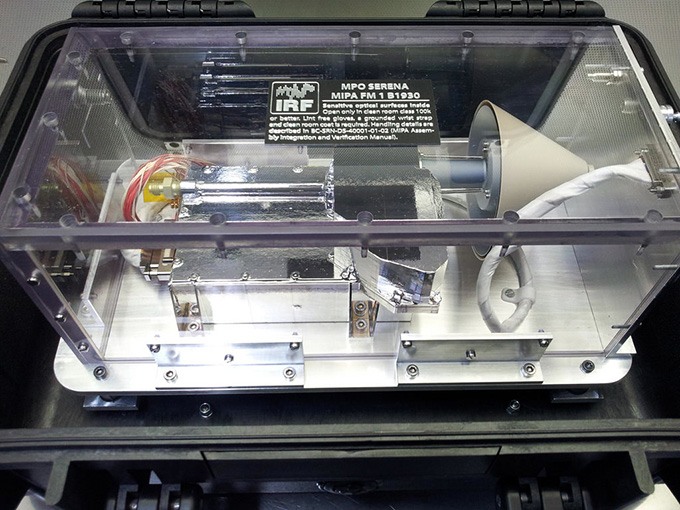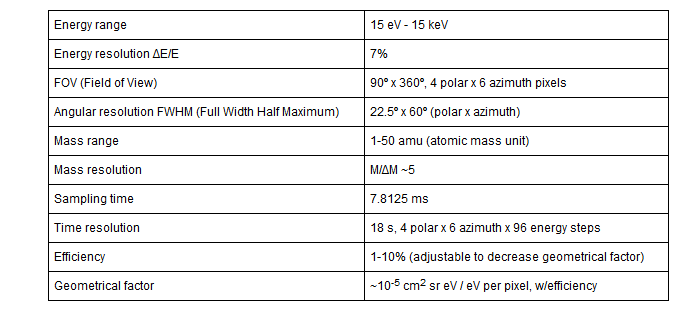

MIPA is an ion monitor investigating the chain of processes by which plasma precipitate towards the surface. It consists of a sensor and a single electronics board including a high voltage supply and front-end-electronics. The ion flux arrival angle is analyzed by an electrostatic deflector and the energy by a following electrostatic analyzer. The ions exiting the energy analyzer are post accelerated by a voltage applied to the time-of-flight (TOF) cell consisting of START and STOP surfaces and two electron multipliers (CCEM). The ions hit a START surface, produce secondary electrons and are then reflected towards a STOP surface. The electrons are collected by a START CCEM and produce a START pulse. Secondary electrons from the STOP surface are collected by the STOP CCEM and provide the STOP pulse. The timing of the event gives the ion velocity and, in combination with known energy, the mass.

